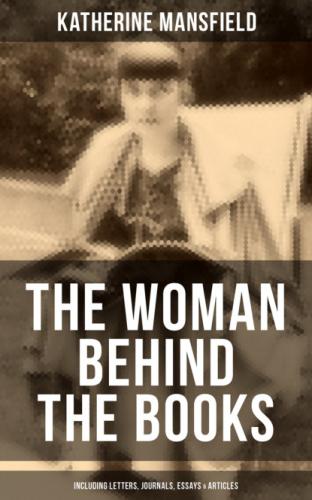Katherine Mansfield, The Woman Behind The Books (Including Letters, Journals, Essays & Articles). Katherine Mansfield
ection>
Katherine Mansfield
Katherine Mansfield, The Woman Behind The Books
(Including Letters, Journals, Essays & Articles)
Published by
Advanced Digital Solutions & High-Quality eBook Formatting
[email protected] 2017 OK Publishing ISBN 978-80-7583-212-2
TABLE OF CONTENTS
BIOGRAPHY
The Life of Katherine Mansfield by Ruth E. Mantz & J. Middleton Murry
LETTERS AND JOURNAL
The Letters of Katherine Mansfield Vol. 1
The Letters of Katherine Mansfield Vol. 2
Journal of Katherine Mansfield
ESSAYS AND BOOK REVIEWS
BIOGRAPHY
THE LIFE OF KATHERINE MANSFIELD BY RUTH E. MANTZ & J. MIDDLETON MURRY
Chapter II: Wellington: 11 Tinakori Road
Chapter VI: The Terrace School
Chapter XI: Wellington: 47 Fitzherbert Terrace
Chapter XII: The Growing of Wings
Chapter XIII: First Short Stories
INTRODUCTION
ALL the necessary research on which this book is based, and at least nine-tenths of the actual narrative, have been the work of Miss Ruth Mantz; and it has been one of my chief concerns, in revising the text to the best of my ability, not to alter the total picture of Katherine Mansfield’s early life which Miss Mantz has created.
Therefore, I do not really deserve the position of collaborator which is accorded me on the titlepage; but since my contribution has been rather more than a mere revision, and in consequence the absence of my name might lead, in the case of some few passages, to the attribution to Miss Mantz of opinions which are mine, it has been thought best that we should share the responsibility for the work.
Since Katherine Mansfield’s death, the interest in her personality has steadily increased. The renown of her work, or the fame of her personality, is becoming universal. It quickly spread through America, it has established itself in France; and now at last it has flowed back to her own country, New Zealand. It is part of the aim of this book to show how deeply rooted in her own country was her genius. There were reasons, good and substantial reasons, why she should have suffered the familiar fate of the prophet who is not without honour save in his own country and among his own friends. New Zealand is still a relatively small community, and Katherine Mansfield’s memories of the people there which she used as material for her stories were sometimes such as to create resentment and heartburning. People still living were disturbed by the reflections of themselves which they found, or thought they found, in her crystal mirror. Further, it seemed to them that what she had done was very easy to do; it consisted in “copying” the characters she had known.
The misunderstanding was complete; but it was natural. Art of the order that is manifest in Katherine Mansfield’s most perfect stories — and most of these have New Zealand for their setting — is simple indeed; but its simplicity is deceptive. Such candour and transparence are the product of a long travail of soul — of an incessant process of self-purgation, of self-refinement into that condition of crystal clarity for which Katherine Mansfield unconsciously struggled and towards the end of her life consciously prayed.
The peculiar, the unique circumstance in Katherine Mansfield’s progress was that the achievement of this condition was intimately connected with her memories of New Zealand. She had suffered there, silently as a little child, resentfully as an adolescent girl. Her resentment against New Zealand was as it were the symbol of her resentment against life itself. A moment came when she understood that. If she could overcome in herself this resentment, if her bitterness could be dissolved “in forgiveness of ancient injuries,” if she could cease to feel that she personally had been wronged, then the truth and beauty of New Zealand would emerge through her.
Hence the inward struggle, of which we have so precious a record in the Journal, with which her first attempt to write Prelude was accompanied. It was no less than a struggle for spiritual re-birth. And she knew it.”You know how unhappy I have been lately,” she wrote as though to her dead brother on February 14th, 1916.”I almost felt: Perhaps ‘the new man’ will not live. Perhaps I am not yet risen. … But now I do not doubt.” At that moment her brother was to her the embodiment of her unseen, unknown self, whom she was struggling to bring to birth;
